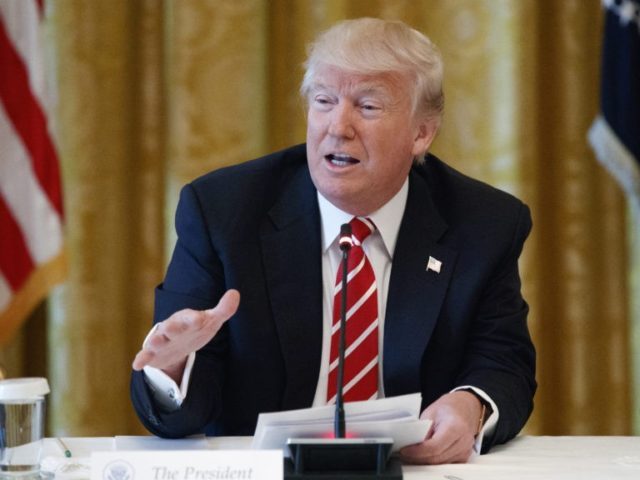June is the season for roses–resplendent in gardens and ever-present at weddings throughout the United States. But then that is fitting, for the rose is, after all, the National Floral Emblem of the United States, declared so by Presidential Proclamation, signed by President Reagan on November 20, 1986:
The American people have long held a special place in their hearts for roses. … NOW, THEREFORE, I, RONALD REAGAN, President of the United States of America, do hereby proclaim the rose as the National Floral Emblem of the United States of America.
And yet history witnessed, beginning only five years later, the catastrophic decline of American florist roses. For in 1991, the Andean Trade Preference Act (ATPA), signed by President Reagan’s successor, George H.W. Bush, with one fell swoop all but wiped out the U.S. cut-flower industry, including roses, rendering the industry uncompetitive with Latin American cut-flowers.
The sad story relates a (by now familiar) misdirection in U.S. trade policy, one that began in the early 1990s. In this instance, an industry consisting of thriving nurseries and tens of thousands of skilled greenhouse workers in California and the Southwest and Midwest lost their livelihood and jobs. For the U.S. cut-flower industry was effectively transferred abroad by U.S. government fiat– trade legislation– to Columbia and Ecuador. Why? Washington policymakers concluded drug trafficking might be curtailed if Latin drug-crop farmers were provided incentive to grow other, legal, cash-crops they could then export to the U.S. preferentially. However, the policy wonks were wrong.
In years afterward, the cut-flower industry did explode, literally take wing—not in the U.S., but in Columbia and Ecuador; and–after NAFTA and successor trade agreements–other underdeveloped countries. Today, more than 80% of cut-flowers ($7.5 billion) sold in U.S. florist shops and for weddings are overnighted into the U.S. in refrigerated planes, largely from Columbia and Ecuador. The previously vigorous local American cut-flower industry has never recovered.
Another question is whether the policies actually reduced drug-flow to the U.S. (their purported aim) or even achieved tangible social benefits for poor Latin drug-crop farmers (another aim). Observers have concluded drugs continued to flow freely from Latin America in the ensuing decades. (And today, isn’t America’s drug problem bigger than ever?). And poor Latin farmers who had grown drug crops didn’t benefit either, for they never had money to invest in the flower trade.
The only beneficiaries, it turned out, were a select few Latin businessmen with available capital and wherewithal to build greenhouses and buy chemicals (including environmentally hazardous and toxic ones banned in the U.S.) to eradicate multiple tropical pests. Other problems emerged, as U.S. labor laws were unenforceable abroad. “There’s a 1 in 12 chance your V-Day [Veterans’ Day] flowers were cut by child laborers,” decried a 2012 Atlantic article on cut-flowers from Columbia and Ecuador. “80% of the workers in Ecuador’s enormous flower industry are children.”
Thus, a U.S. government-inspired social engineering experiment designed to reduce the U.S. drug problem, the Andean Trade Preference Act of 1991, backfired big-time. Government experts projected rosy benefits that in practice turned out to be nonexistent, with tragic human consequences.
The tenets and assumptions of globalist trade policy orthodoxy that underlie this woeful tale have only recently, almost 30 years later, been made the subject of direct and forceful challenge—by, of all people, billionaire-turned-populist Donald Trump. From the outset of his campaign, “The Donald” began a fresh and very public assessment of U.S. trade policies–an analysis based on whether policies had hurt or benefited American workers. Decades’-long sacred cows of an elitist trade policy establishment have come under his skeptical scrutiny. I submit, Mr. President: trade policies affecting the cut-flower industry are a case in point.
The tale does not end in 1991. Worse: ATPA was succeeded by other faulty trade deals, such as the North American Free Trade Agreement (NAFTA), signed by Bill Clinton in 1994, which promoted the idea of a free-trade zone in Canada, the United States, and Mexico. Again, technocrats weighed in: economic costs would be negligible and benefits enormous. Their Report, prepared in January 1993, for the U.S. House Ways and Means Committee, concluded in its Executive Summary: “the preponderance of evidence indicates an almost indiscernible effect on U.S. wage rates for both low-skilled and high-skilled workers.”
NAFTA in practice led to the loss of whole, previously viable, U.S. industries and more than 700,000 U.S. manufacturing jobs, according to AFL-CIO estimates. As with cut-flowers, trade under NAFTA often turned out to be a one-way street, as we opened up our economy to predation. As for ATPA, it gave way to the Andean Trade Promotion and Drug Eradication Act (ATPDEA), another alphabet-soup trade arrangement, in 2003, signed by Bush ‘43. That hasn’t worked out as promised, either.
Today, with the Trump administration examining a plethora of bad trade policies under both Democratic and Republican administrations since President Reagan left office, perhaps there could be some relief in sight for Americans. Experience since the 1990s with the cut-flower industry certainly should teach us one hard lesson: in future tally up the full costs—human as well as economic—with a jaundiced eye, especially toward untested predictions, before committing to new trade deals that could damage U.S. industries and cost American jobs.
Maybe, then, there will come a day not too distant–if President Trump can deliver on his trade promises–when President Reagan’s declaration in 1986 about the glorious rose as central in American national life can be given renewed meaning.
Ambassador Faith Whittlesey, former U.S. ambassador to Switzerland (twice) and member of the White House senior staff during the Reagan administration, was the recipient of the International Friend of the Rose Award in 2010 and the naming of a new Tea Rose ‘Faith Whittlesey’ in 2006 from the American Rose Society, among other honors.

COMMENTS
Please let us know if you're having issues with commenting.